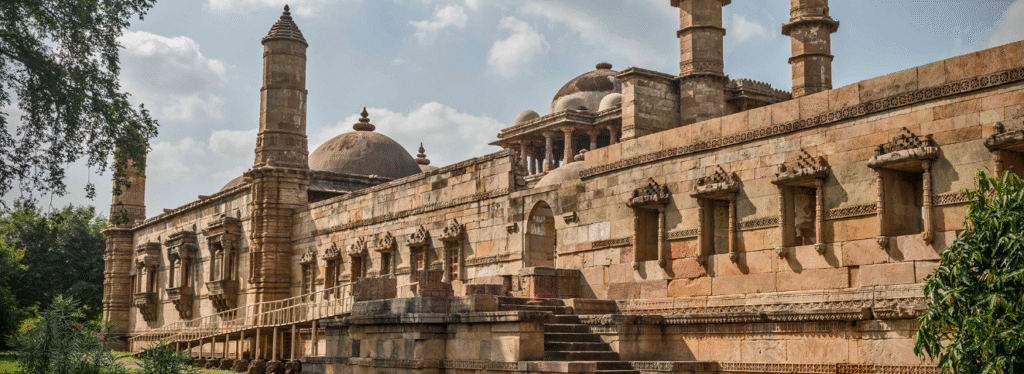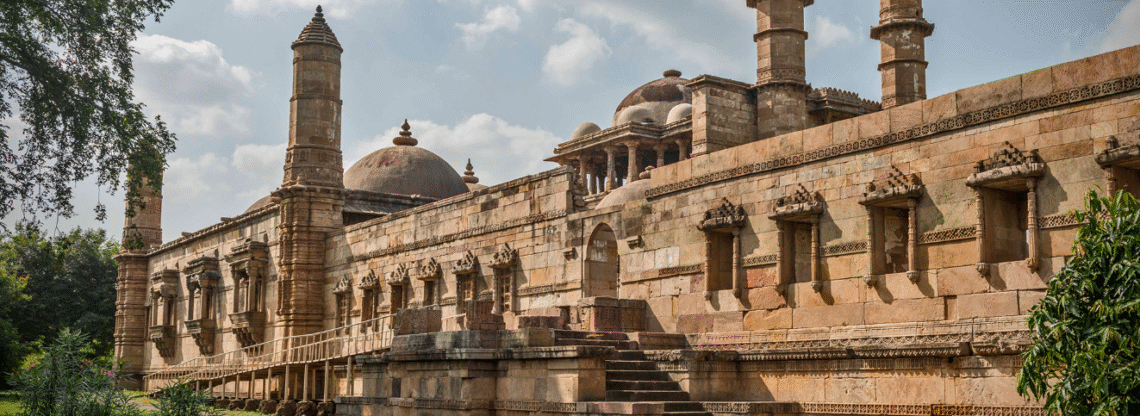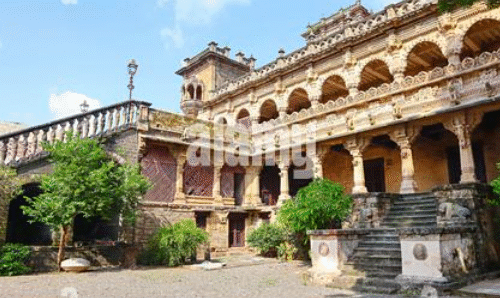Pavagadh Fort, located in the Panchmahal district of Gujarat, India, stands as a testament to the region’s rich history and architectural brilliance. Perched atop the Pavagadh Hill, the fort offers a unique blend of Hindu, Jain, and Islamic influences, reflecting centuries of cultural amalgamation.
Historical Significance
The history of Pavagadh Fort dates back to ancient times. Greek geographer Ptolemy, in 140 CE, referred to Pavagadh as an ancient and holy site, indicating its long-standing religious importance. In the 3rd century BC, King Samprati, a follower of Jainism, constructed a temple and installed the idol of Sambhavnatha, consecrated by Jain monk Acharya Suhastisuri. Over the centuries, the fort has witnessed various dynasties and rulers, each leaving their mark on its structure and culture.
Location and Accessibility
Pavagadh Fort is situated approximately 50 kilometers from Vadodara, at the base of the Pavagadh Hill. The hill rises to a height of nearly 800 meters above sea level and is one of the oldest rock formations in India . Visitors can reach the summit via a ropeway, which offers panoramic views of the surrounding landscape, or by trekking up the hill, which is a popular activity among adventure enthusiasts.

Architectural Design
The architectural design of Pavagadh Fort is a harmonious blend of Hindu, Jain, and Islamic styles. The fort complex includes temples, mosques, palaces, and other structures, each showcasing unique architectural elements. The Lakulisa Temple, dating back to the 10th–11th century, is dedicated to Lord Shiva and features intricately carved pillars and deities . The Kalika Mata Temple, situated at the summit, is one of the 51 Shakti Peethas and holds significant religious importance .
Read More :- Dholavira Fort: A Glimpse into Ancient Urban Planning
Notable Structures within the Fort
- Jami Masjid: Constructed in 1508–09 CE, this mosque is renowned for its Indo-Islamic architecture, featuring 172 pillars and seven mihrabs .
- Helical Stepwell: A unique architectural marvel, this stepwell spirals down in a helical pattern and is a testament to the engineering skills of the era .
- Saat Kaman: A structure with seven arches, it is believed to have been used for military purposes and offers insights into the fort’s defensive strategies.
- Palaces and Pavilions: The fort houses several palaces and pavilions, including the ruins of Patai Rawal’s Palace and the Kabutarkhana Pavilion, which were integral to the fort’s royal lifestyle .
Cultural and Religious Significance
Pavagadh Fort is not just a historical monument but also a center of cultural and religious activities. The Kalika Mata Temple attracts thousands of devotees, especially during the Navaratri festival, making it a vibrant hub of religious fervor . The fort’s diverse architectural styles reflect the confluence of various cultures and religions, making it a symbol of India’s pluralistic heritage.
Preservation and Tourism
Recognizing its historical and cultural importance, Pavagadh Fort, along with the Champaner-Pavagadh Archaeological Park, was designated a UNESCO World Heritage Site in 2004. Efforts are being made to preserve and maintain the site, ensuring that future generations can appreciate its grandeur. The fort has become a popular tourist destination, attracting visitors interested in history, architecture, and spirituality. Tourism has also contributed to the local economy, providing livelihoods to many in the surrounding areas.

Conclusion
Pavagadh Fort stands as a monumental reminder of Gujarat’s rich history and cultural diversity. Its unique blend of architectural styles, historical significance, and religious importance make it a must-visit destination for those interested in exploring India’s heritage. Whether you’re an avid historian, an architecture enthusiast, or a spiritual seeker, Pavagadh Fort offers a profound experience that resonates with the soul.





